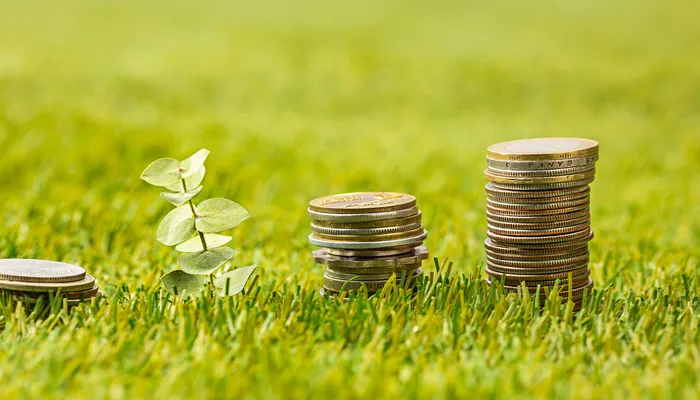The Rise of Green Architecture
In recent years, the architectural landscape has witnessed a transformative shift towards sustainability, with green architecture emerging as a pivotal trend. This shift is driven by the growing awareness of environmental issues, the need for energy efficiency, and the demand for healthier living spaces. Green architecture, also known as sustainable architecture, integrates eco-friendly design principles and practices to minimize the environmental impact of buildings. However, the initial costs of implementing these green technologies can be significant, which is where green loans come into play. These loans provide the necessary financial support to make sustainable building projects viable, promoting the creation of eco-friendly spaces.
The Concept of Green Loans
Green loans are specialized financial products designed to support environmentally sustainable projects. These loans can be used for a variety of purposes, including the construction of new green buildings, retrofitting existing structures to improve energy efficiency, and integrating renewable energy sources. The primary aim of green loans is to facilitate projects that contribute to environmental sustainability. Financial institutions offering green loans often provide incentives such as lower interest rates or longer repayment terms to encourage borrowers to adopt sustainable practices. By making green architecture more accessible and affordable, green loans play a crucial role in the broader effort to combat climate change and reduce the carbon footprint of the built environment.
Benefits of Green Architecture
Green architecture offers numerous benefits beyond environmental sustainability. One of the most significant advantages is the potential for energy savings. Green buildings are designed to be highly energy-efficient, utilizing natural light, improved insulation, and energy-efficient systems to reduce energy consumption. This not only lowers utility bills for occupants but also reduces the strain on local power grids. Additionally, green buildings often incorporate features that improve indoor air quality, such as advanced ventilation systems and the use of non-toxic materials, which can enhance the health and well-being of residents. Moreover, sustainable buildings tend to have higher property values and can attract eco-conscious tenants or buyers, making them a sound investment for the future.
Challenges in Financing Green Architecture
Despite the clear benefits, financing green architecture can be challenging. The initial costs associated with sustainable building practices are often higher than those of traditional construction methods. This includes the expense of eco-friendly materials, advanced technology, and specialized design services. For many developers and homeowners, securing the necessary funds to cover these additional costs can be a significant hurdle. Traditional loans may not provide the flexibility or favorable terms needed to make green projects financially feasible. This is where green loans offer a crucial solution, providing tailored financial products that address the unique needs of sustainable construction and renovation projects.
Case Studies: Successful Green Loan Projects
Several case studies highlight the effectiveness of green loans in promoting sustainable architecture. For example, the Bullitt Center in Seattle, often referred to as the “greenest commercial building in the world,” was financed through a combination of green loans and grants. This building features solar panels, rainwater harvesting systems, and composting toilets, among other sustainable features. Another notable example is the Edge building in Amsterdam, which utilized green financing to become one of the most sustainable office buildings globally. These projects demonstrate how green loans can enable the realization of ambitious, cutting-edge green architecture projects that set new standards for sustainability.
Government Incentives and Green Loans
Governments around the world are increasingly recognizing the importance of sustainable architecture and are introducing incentives to support green building projects. These incentives often complement green loans, making it even more attractive for developers to pursue eco-friendly designs. For instance, tax credits, grants, and subsidies can significantly reduce the overall cost of green construction. In some regions, regulatory frameworks mandate certain sustainability standards for new buildings, further driving the demand for green loans. By aligning financial support with regulatory measures, governments can create a conducive environment for the widespread adoption of green architecture.
Future Trends in Green Architecture Financing
The future of green architecture financing looks promising, with several emerging trends likely to shape the industry. One notable trend is the integration of digital technologies in the loan application and approval process, making it easier for borrowers to access green financing. Additionally, the growing popularity of green bonds, which are used to finance projects with environmental benefits, is expected to provide an alternative source of funding for large-scale sustainable developments. Another trend is the increasing collaboration between public and private sectors to create innovative financing solutions that address the unique challenges of green architecture. As awareness of environmental issues continues to grow, the demand for green loans and other sustainable financing options is likely to rise.
The Role of Financial Institutions
Financial institutions play a pivotal role in the promotion of green architecture. By offering green loans, banks and other lenders can support the transition towards a more sustainable built environment. These institutions can also provide valuable expertise and guidance to borrowers, helping them navigate the complexities of sustainable building practices and maximize the benefits of their projects. Moreover, by incorporating sustainability criteria into their lending policies, financial institutions can encourage broader adoption of green architecture and contribute to the global effort to combat climate change. The commitment of financial institutions to sustainability is crucial in ensuring that green architecture becomes the norm rather than the exception.
Green Loans and Economic Viability
The economic viability of green loans is a critical consideration for both lenders and borrowers. For lenders, the long-term benefits of financing sustainable projects often outweigh the initial costs. Green buildings typically have lower operational costs, which can translate to reduced risk of default on loans. For borrowers, the savings on energy and maintenance costs can help offset the higher upfront expenses associated with green construction. Additionally, green loans can enhance the marketability of properties, as there is a growing demand for eco-friendly buildings among tenants and buyers. This symbiotic relationship between economic viability and environmental sustainability makes green loans a compelling option for financing sustainable architecture.
Building a Sustainable Future
Green architecture represents a critical component of the broader effort to create a sustainable future. By integrating eco-friendly design principles and practices, green buildings can significantly reduce their environmental impact while offering numerous benefits to occupants and investors. However, the initial costs associated with sustainable construction can be a barrier to widespread adoption. Green loans provide a vital solution to this challenge, offering tailored financial products that make green architecture more accessible and affordable. As the demand for sustainable buildings continues to grow, green loans will play an increasingly important role in financing the transition towards a more sustainable built environment, ultimately contributing to a healthier planet for future generations.




